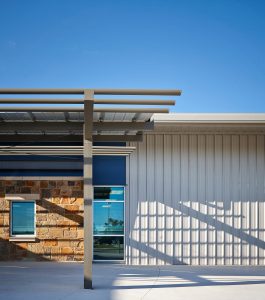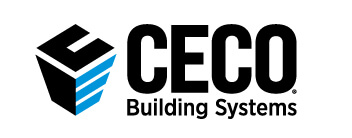Pre-Engineered Metal Buildings Compared to Concrete and Masonry
Posted on June 13, 2017 by Ceco Building Systems In our prior post we looked at the advantages that pre-engineered metal buildings have compared to wood-framed buildings. Since building owners, architects, developers, engineers, and others routinely seek the best value for the investment made in design and construction, it benefits us to look at a similar comparison between metal buildings and common building construction that uses concrete and masonry.
In our prior post we looked at the advantages that pre-engineered metal buildings have compared to wood-framed buildings. Since building owners, architects, developers, engineers, and others routinely seek the best value for the investment made in design and construction, it benefits us to look at a similar comparison between metal buildings and common building construction that uses concrete and masonry.
Metal Building Advantages over Concrete and Masonry Buildings:
Speed of Construction: Concrete work requires a number of time-consuming steps, including creating and placing formwork, mixing and pouring concrete, waiting for the curing process to take place, and form removal. Masonry similarly requires mixing of mortar and grout, the placement of the masonry units, and then the curing of the mortar. Metal buildings do not require the time for any of those steps, except for concrete foundations, where used. Instead, the metal components can be installed quickly, efficiently, and with no waiting.
Less Building Weight: Concrete and masonry are inherently heavy materials and that extra weight, or dead load, needs to be taken into account in the structural engineering of the building. That usually translates into larger structural members such as beams, columns, and footings. When the building is constructed instead out of steel, those elements can all be less heavy, comparatively smaller, and usually less expensive.
Site Crews: Pre-engineered metal buildings use the controlled factory conditions to perform critical fabrication functions. That means the onsite crew doesn’t need to have special skills, such as having a certified welder, to construct and assemble the building. That saves time and money compared to construction crews for conventional structural steel, concrete, and masonry work.
Recycling: It is common for a significant portion of the steel used in pre-engineered metal buildings to come from recycled materials, helping to conserve natural resources. At the end of the service life of the building, those materials can again be recycled and used for a new building or new purposes. Concrete and masonry do not typically contain recycled content and at more difficult to recycle at the end of their service life.
Resilience: Concrete and masonry structures need to be designed with extra measures in order to survive extreme conditions such as an earthquake. Steel buildings can readily be design to address the dynamic loading conditions imposed by seismic activity and have proven themselves repeatedly in this regard.
Weather Tolerance: Concrete and masonry construction is usually very dependent on favorable weather conditions. That doesn’t just mean a lack of wind or rain; it means appropriate temperatures of between about 40 and 80 degrees Fahrenheit. Poor weather conditions not only impact the quality of the workmanship, they can compromise the strength and the quality of concrete, mortar, grout, and similar products. Steel construction overcomes those limitations since the structure is sized and prepared in the factory without needing to rely on field conditions to be constructed accurately. Further, metal building components can tolerate temperatures that are both hotter and colder than those tolerated by masonry and concrete construction. That means the metal building construction can continue without being limited by most weather conditions, helping to keep projects on their time schedules.
With the number of ways that pre-engineered metal buildings provide advantages over concrete and masonry construction, it is easy to see why they remain such a popular choice for low-rise buildings of many different types. Learn more at http://www.mbma.com or https://www.cecobuildings.com.

